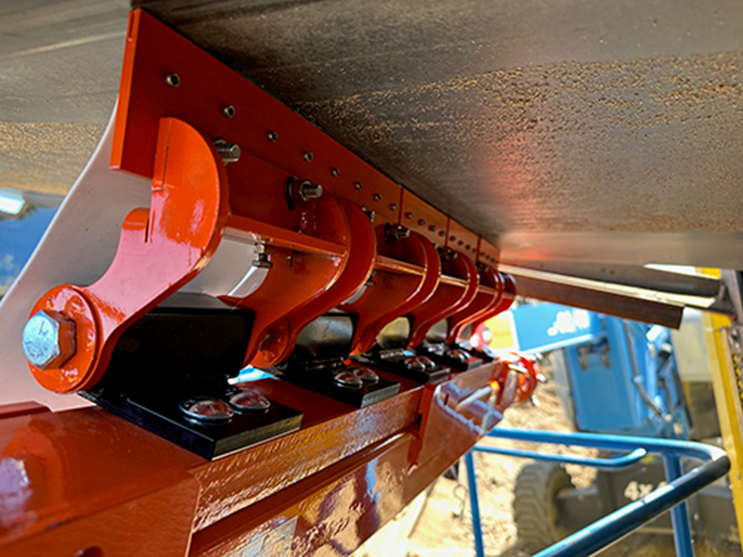Martin offers new belt cleaner with safer, easier maintenance


Martin Engineering, a global leader of belt conveyor accessories, has announced the next generation of secondary conveyor belt cleaners engineered to reduce dusty carryback and lower maintenance time.
Designed to withstand the stress of heavier loads carried on wider, thicker belts at higher speeds, the Martin SQC2S Orion secondary cleaner features individually cushioned tungsten carbide blade cartridges for effective cleaning without risk to the belt or splices. A two-tiered tensioning system mounted on the SQC25 means minimal adjustments and monitoring throughout the life of the blade.
The heavy-duty blades are mounted on a slide-in/slide-out assembly for faster and safer one-worker external servicing. The result is improved belt cleaning with less dust and maintenance for greater workplace safety at a lower cost of operation. To accommodate belt cupping and other uneven surfaces, the blade assemblies can be individually adjusted to match the belt profile.
Secondary cleaners play an essential role in the belt cleaning process by significantly reducing the volume of dust and fines dropped as carryback on the belt return. Primary cleaners release most of the abrasive material remaining on the belt after discharge. Located below the head pully just behind the primary, secondary cleaners scrape off the fines and dust that hide in cracks and divots in the belt.
The Martin SQC2S Orion secondary cleaner is appropriate for all bulk handling material applications. The unit is made up of individual 152.5 mm blades mounted on a square steel tube assembly. Not designed for reversing belts, it is suitable for 455 to 2,440 mm belt widths, belt speeds up to 6 m/s, and temperatures up to 120°C.
“What sets this unit apart from others on the market is the innovative, dual tensioning system with independent heavy-duty tungsten blades which are game-changing design features,” Martin conveyor product manager Dave Mueller explained. “The first level of tensioning is supplied to the entire assembly using the heavy-duty SQC2S tensioner which applies light upward torque evenly across the belt profile for less friction and no wear on splices.”
Tested on hard rock and slurry belts, the Orion blades offered superior cleaning results with a longer equipment life. This is due to the rugged tungsten carbide core surrounded by mild steel. Blades are also available in stainless-steel for specific corrosive materials. The blade design features an attached deflector shield made from polypropene or rugged nylon for high temperature applications.
Get more information on www.Martin-Eng.com.
Comments